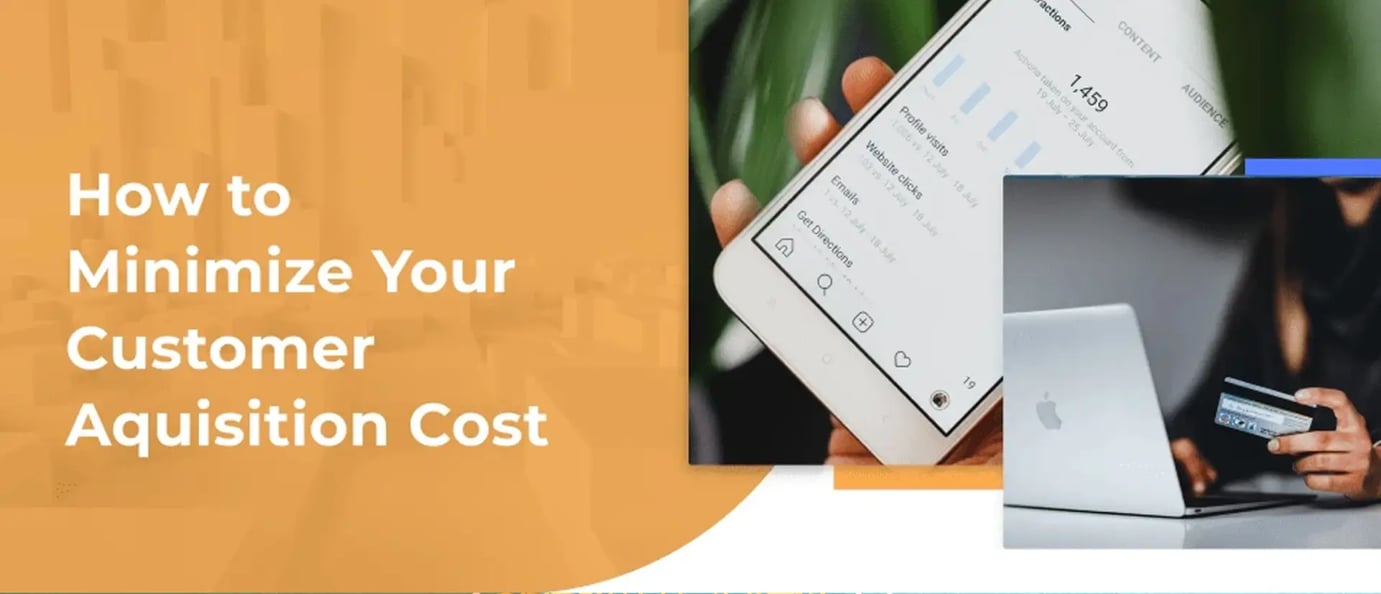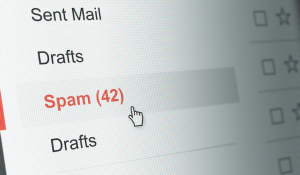
As a digital marketer, there is one metric that I care about most and that is the cost to acquire a paying customer, most often referred to as Customer Acquisition Cost (CAC).
Customer acquisition is a fundamental necessity for growing businesses. This is how you grow your revenue, build your brand and scale your business. Doubling down on the advertising channels producing the lowest customer acquisition cost the best way to maximize your return on investment in marketing.
In this article I’m going to present a few digital marketing strategies that I use to minimize customer acquisition cost for my customers. I’m also going present you with a list of tools and resources that you can use to optimize your digital marketing efforts yourself.
How to calculate Customer Acquisition Cost (CAC)?
As stated, CAC is the average cost to acquire a customer. It can be calculated by taking the total marketing and advertising costs during a certain time period (including salaries and other headcount related expenses) and dividing it by the total number of paying customers generated from that investment.
CAC = TOTAL MARKETING SPEND / # OF PAYING CUSTOMERS GENERATED
For example, if a business spends $2000 on Pay Per Click (PPC) Facebook Ads, which produce 20 new paying customers, their average cost to acquire one paying customer for that campaign would be $100.
Since a company’s marketing strategy will normally include investing in several advertising channels it is important to track from which channels leads are generated. Tracking sales to this degree can be difficult and time-consuming however it is the only way to determine which advertising channel is producing the best return on investment.
Strategies to minimize Customer Acquisition Cost (CAC)
There are a number of things that you can do to maximize the effectiveness of your digital marketing campaigns and in turn minimize your customer acquisition cost. Some strategies include:
REFINING YOUR TARGET AUDIENCE
In order to do this you need to know your target customer persona. Hubspot defines a customer persona as “fictional, generalized representations of your ideal customer”. You should know the following characteristics about your ideal customer:
-
Location (where they live)
-
Age
-
Gender
-
Education
-
Interests
-
Platform preference
-
Device preference
-
Browsing date and time behaviour
Once you know these characteristics refine your advertising campaign targeting so that ads are only delivered to people who embody your customer persona traits. Doing so will improve your ad relevancy, increase your click-through-rate and reduce your cost per click.
OPTIMIZING THE TIMING OF YOUR AD DELIVERY
In line with the last section, it is important to consider when (day and time) to deliver your ads.
For example – I have a client who services pre and postnatal women. Her target market includes women between 25-40 years of age who are interested in childbirth, weight loss, pregnancy, breastfeeding, etc. What we have found is that this niche market tends to engage with our ads most frequently on Sunday evenings, Mondays and Tuesdays. They also tend to heavily engage our ads in the middle of the night!
Seems odd, doesn’t it? Well, when you think about the target customer it actually makes sense.
We are targeting pregnant women and women who have recently had a baby. We’re guessing that these moms are engaging with our ads in the middle of the night while trying to stay awake when they are feeding their baby! We regularly see sales conversions happen between the hours of midnight and 5am!
That being said our ads for this same niche market perform poorly in the late afternoon and early evening. Why? Our guess is that our Moms are busy preparing dinner, spending time with their husband and putting their baby down to sleep.
Our ads also perform poorly towards the end of the week. Why? Our guess is that towards the end the week our Moms begin getting focused on weekend; travelling to see family, hosting friends or other activities and therefore spend less time engaging in online purchasing activities.
The point I am trying to make is that you need to try and put yourself in your target customer’s shoes and understand their lifestyle. If you can do this then you can limit your marketing spend to the days and time slots that achieve the best performance.
UNDERSTANDING WHAT DEVICE TO DELIVER YOUR AD TO
Most advertising platforms like Google and Facebook allow you to select which devices your ads are delivered to. More and more people are using their mobile device to make online purchases.
In fact, Hubspot estimates that "mobile e-commerce sales now make up 60 percent of all e-commerce sales around the world". Remember the niche Mommy market that I mentioned previously? We’ve observed that 92% of our ads delivered to this target market are interacted with from a mobile device. Makes sense considering that they are probably carrying around a baby… I mean let’s face it, it’s easier to hold a baby and browse the internet on a smartphone than it is to hold a baby and whip out a laptop!
The key takeaway here is that you need to analyze your target market and optimize your ad delivery for the devices that they are most likely use. Doing so will help increase your conversion rates and drop the cost to acquire a customer.
A/B TESTING YOUR AD CONTENT
A/B testing, sometimes called split testing, is the concept of comparing two versions of an ad, web page, or other form of content to determine which performs best. Essentially this is a basic experiment where the performance of one version (the control) is compared against another (the version with a variation) for the purpose of optimizing content over the course of a campaign. In order to maximize the effectiveness of a digital marketing campaign it is essential that every step of the campaign is optimized using A/B testing.
Ads should be tested against each other – that is that headlines, descriptions, link titles, images, buttons, etc should be experimented with to determine which variants perform the best. Landing pages (the page that an ad directs traffic to) should be tested against each other. Headlines, call-to-actions, formatting, layout, content, colour contrast, button size, social proof, etc all need to be considered and tested. For more information on A/B testing a landing page design check out Hubspots blog article “5 Landing Page A/B Tests (And Their Surprising Results)”.
IMPROVING PAGE LOADING SPEED
Have you ever performed a Google search, observed a search result that peaked your interest, clicked on the link and then abandoned the page because it took too long to load? The truth is that this happens all the time! The average user has absolutely no patience and wants immediate access to information.
Kissmetrics wrote a great article on the relationship between page loading time and page abandonment. They state that 25% of users will abandon a page after 4 seconds if the page does not load. The key takeaway here is that you need to ensure that your website and landing pages load quickly! Doing so will ensure that you don’t lose any leads due to page loading issues.
USING SOCIAL PROOF
Picture this – you are standing on a busy downtown street and have the choice to eat at one of two, side-by-side, burger joints. One is packed with happy people and the other one is empty. Which do you choose?
Most people will choose the busy burger joint over the empty one. Hell, I bet most people would even go through the hassle of putting their name on a reservation list and waiting for seat if required. Why? People are naturally risk adverse and feel most comfortable when following the herd.
Social proof is the positive influence created when someone finds out that others are doing something. Social proof builds trust and increases conversions which ultimately helps reduce customer acquisition cost.
In order to maximize the benefits of social proof always ensure that you have written testimonials and reviews on your website and landing pages. Ask permission to use client logos and publicly acknowledge the popular brands that you work with.
NURTURING YOUR LEADS
Guess what – most visitors to your website are probably not ready to buy. You’d love to think that people are just surfing the internet with their credit card in hand, ready to pounce on the first offer that is given to them, unfortunately that is not normally the case.
Lead nurturing is the concept of keeping prospects engaged with relevant content. The hope is that by doing so you can build trust and brand loyalty and maintain the relationship until the prospect is ready to buy.
Let’s use the real estate industry as an example. Ideally, real estate agents want to “do both ends of the deal” – that is they want to find a buyer, list the home and then find a seller for that home so that they can make a commission on both ends of the transaction. Given that the average detached home in Toronto is currently selling for over $1 Million dollars, that commission can a significant amount of money!
The problem is that most people only buy or sell a home a few times in their entire life! This means the in order for the real estate agent to be successful they need to build trust and stay top of mind with prospective buyers and seller year after year.
The same situation exists with pretty much every other business in that there is a timing issue. You are always ready to sell but your prospect may not always be ready to buy. It is therefore essential that you build trust and maintain brand awareness through long lasting, content rich engagement strategies. One of the easiest ways to do this is using email marketing automation tools which can be setup to drip content your prospective buyers based on their individual needs and actions.
The tools I use to optimize my digital marketing campaigns
I use a bunch of tools to optimize my digital marketing campaigns. Some tools are used for on-page analytics, others for landing page design and A/B testing, other tools for marketing automation and prospect nurturing.
I like things neat and tidy. That’s why I decided to compile 44 of my favourite tools into a handy little resource guide for all of you digital marketer types. In this guide, I list 44 slick tools (some of them you’ll know of, some of them you won’t), how I use them, where to find them and how much they cost.

